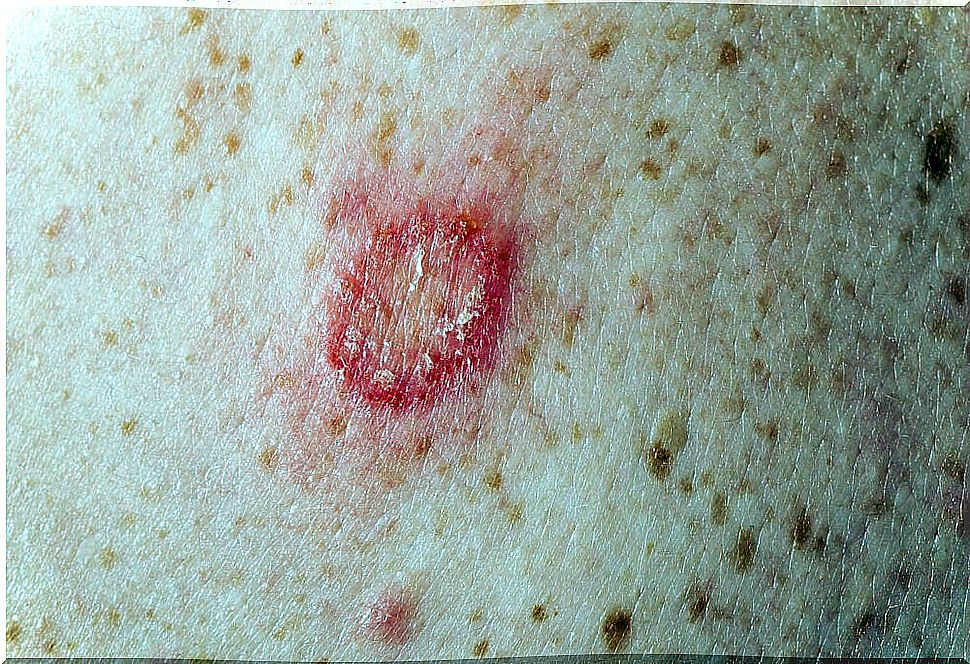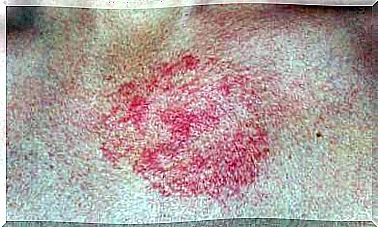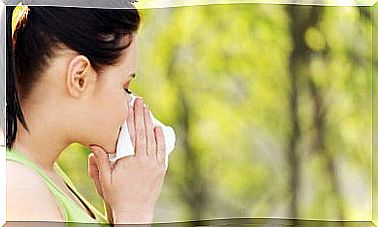2 Types Of Skin Fungus And How To Identify Them
Skin fungal infections are often accompanied by itching and even pain and appear in areas with folds or exposed to continuous moisture

Taking care of our skin is important for many reasons. In principle, it is the protective layer of our body and keeping it cared for will also protect the rest of our body. In addition, any damage suffered, whether due to skin fungus or other causes, will be visible, compromising our comfort and personal image.
Therefore, it is vital to protect ourselves from skin fungi, as well as to know how to identify if we suffer from an infection that needs medical attention. In this way, we can heal it quickly and avoid marks or sequelae.
Are all fungi on the skin the same?
Just as there is no single animal or plant species, the kingdom of fungi is also made up of various types of organisms. Some of them can affect humans and cause skin infections.
When it comes to dermal infections, we could talk about 2 types of fungi that commonly cause spots, itching and even pain.
1. Ringworm

Dermatophytosis, commonly known as “ringworm,” is an infection caused by fungi called dermatophytes. These fungi, in humans, have an incubation period of 1 to 2 weeks before manifesting symptoms of infection.
Dermatophytes grow best in a warm and humid environment, being more common in tropical and subtropical regions. They also multiply in closed or poorly ventilated spaces, clothes that suffer excessive sweating, objects or machines for sports and exercise, etc.
Dermatophytes generally grow only in tissues that contain keratin or “dead tissue, ” such as hair, nails, and the outer layer of the skin. They also stop their spread when they come into contact with living cells or areas of inflammation.
These fungi are transmitted by contact with the fungus on another host. The infection generally begins in the nascent hair or in the outermost part of the skin, known as the “stratum corneum”, and from there it spreads.
Ringworms are classified according to the area of the body they affect. For example, ringworm affects the hair and scalp. The corporal is one that attacks the tissue of the trunk, extremities and face. Ringworm of the hand is another common infection that affects the palms and makes them scaly.
A very common ringworm is that of the foot, better known as “athlete’s foot”. The humid and warm environments: utensils and sports clothes, changing rooms in gyms, are ideal for these skin fungi. However, anyone is prone to this infection.
How to identify this type of fungus?
You can tell if you have ringworm problems if you present:
- Itching or burning
- Ring-shaped skin redness
- Blisters
- Scaly or peeling skin
- Decomposition or softening of the affected area

2. Candida
Candidiasis is an infection caused by yeast. It is a very common fungus, present even in the human body.
The infection occurs when the antibodies in our body are not able to defend ourselves against these fungi on the skin. This can happen when we have low defenses or when we take antibiotics.
Although this type of infection can affect any part of the body, it mainly appears in areas of the skin with folds, such as the armpits, the lower part of the breasts, the groin, etc. When it occurs on the skin, it is called cutaneous candidiasis.
Yeasts also affect the mucous membranes: the genitals, the mouth, the tongue, and even in extreme cases, the esophagus and lungs. Candida is the main cause of dermatitis in babies, due to the moisture that remains in the diaper.
How to identify this type of fungus?
- Redness and rash
- Itching or burning
- White discharge from the affected area
- Pain and discomfort
- Discoloration, weakening, stretch marks, thickening, or loss of nails
The best way to protect ourselves from skin fungus is to avoid contact with other infected people, their clothing, and personal items.
It is also essential to maintain excellent personal hygiene. If you identify that you are suffering from a fungal infection on the skin, visit your doctor to prescribe an antifungal.









